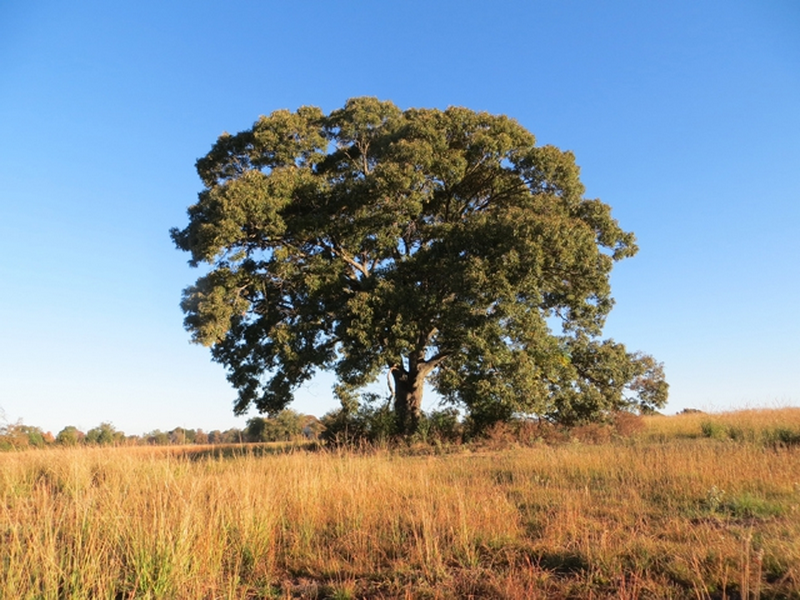Southern Red Oak Tree
Quercus falcata
Click here to download a PDF of this plant information page (for printing).

Sun Exposure: Full Sun, Part Sun
Season of Interest: Summer, Fall
Bloom Time: April - May
Bloom Color: Gold (catkin)
Height: 60 to 100 ft.
Spread: 50 to 60 ft.
Spacing: 55 ft.
Water Needs: Average
Maintenance: Prune for shape when young
Soil Type: Clay, Loam, Sandy
Soil pH: Acidic
Soil Drainage: Well drained
Pests: Leaf miners, Galls
Diseases: Oak wilt, Leaf spot
Wildlife: Birds, Small mammals

Description:
The Southern Red Oak is a common oak in the southern U.S. The growth habit is open and rounded, reaching 60 to 100 feet. Leaves have the typical oak-leaf shape, are green in summer, usually red in the fall. Leaves also have white or gray hairs underneath. Acorns are 1/2 inch wide, borne in pairs or single, striated dark brown with light brown, pattern. These native oaks do well in the poor, dry soils of the Piedmont. Native from New Jersey to Florida, and west to Texas. For more information see:
plants.ces.ncsu.edu/plants/quercus-falcata
Care and Growing Tips:
Young trees need extra phosphorus to encourage good root development. Look for a fertilizer that has phosphorus in it (the second number on the bag.) Apply recommended amount according to the label directions in the soil at time of planting or at least during the first growing season. Naturally found on poor rocky upland soils, Southern Red Oak should be grown in full sun in well-drained soil that is acidic and can be clay, sandy or loam. It is well suited for planting in areas such as along roadsides where there is little maintenance after planting.